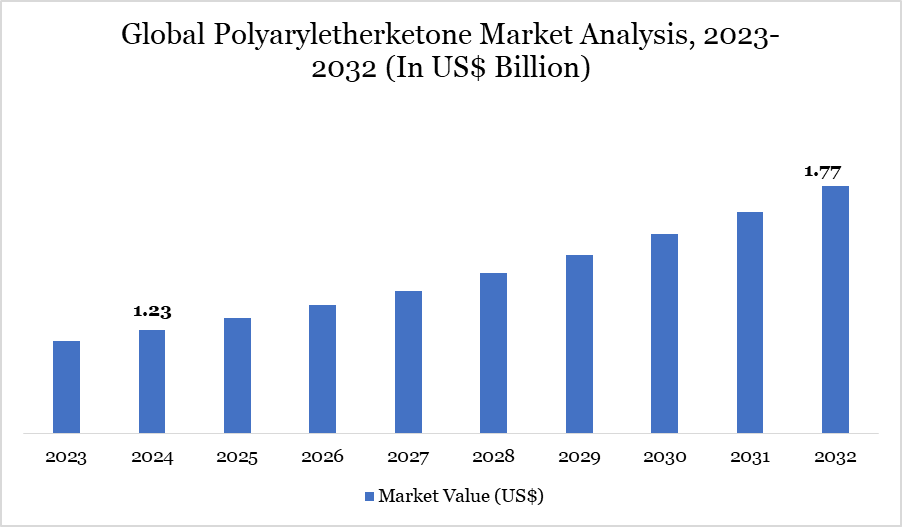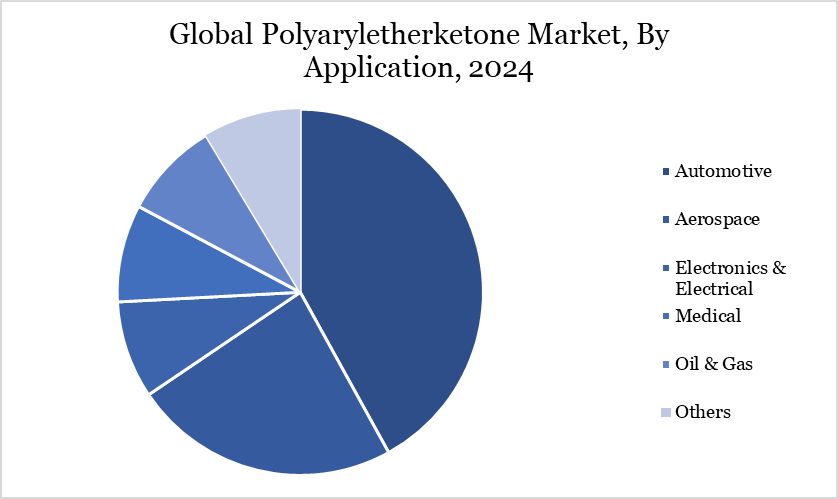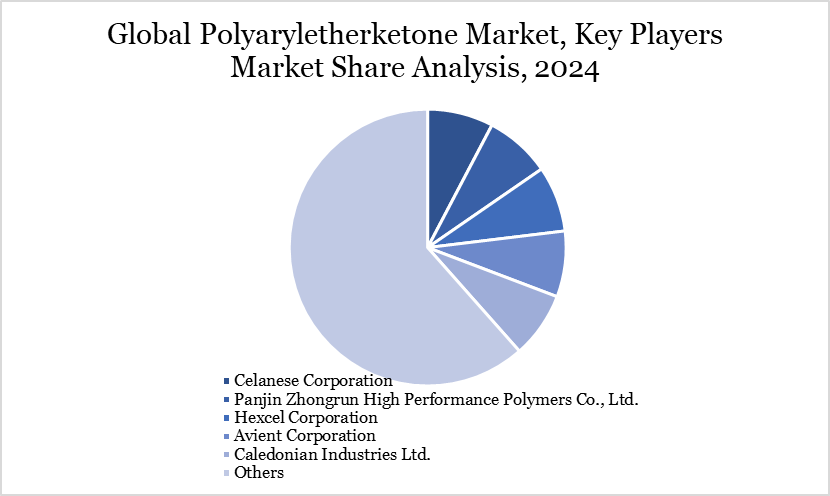Polyaryletherketone Market Size
Polyaryletherketone Market size reached US$ 1.23 billion in 2024 and is expected to reach US$ 1.77 billion by 2032, growing with a CAGR of 4.63% during the forecast period 2025-2032.
The global Polyaryletherketone (PAEK) market is witnessing robust growth, fueled by the rising demand for high-performance polymers. PAEK, which includes Polyetheretherketone (PEEK) and Polyetherketoneketone (PEKK), offers exceptional mechanical, thermal, and chemical properties, making it suitable for diverse industrial applications, particularly in aerospace, automotive, and healthcare sectors.
In dentistry, PAEK is replacing traditional materials like metals and acrylics. Its ability to mimic the mechanical properties of bone and teeth, along with its non-allergic and aesthetic qualities, makes it ideal for use in prosthetics, implants, crowns, and orthodontic devices. The increasing shift towards metal-free restorations is significantly driving PAEK’s adoption in modern dental practices.
The medical sector is increasingly adopting PAEK due to its biocompatibility and resistance to sterilization processes, making it ideal for implants and surgical tools. As demand grows for metal-free, patient-safe materials, PAEK’s relevance in dentistry and healthcare continues to rise. Ongoing innovations and property-enhancing additives further strengthen its position in the global market.
Polyaryletherketone Market Trend
The global Polyaryletherketone (PAEK) market is experiencing substantial expansion because to its exceptional mechanical attributes, including elevated wear resistance, thermal stability, and chemical durability. These attributes render PAEK an optimal selection for essential applications in the aerospace, automotive, and medical sectors. In aircraft, PAEK is employed in the production of structural components, seals, and thermal acoustic blankets, facilitating weight reduction and improved performance.
Automotive makers are progressively utilizing PAEK in engine components owing to its resilience to heat and friction, a trend bolstered by the global increase in vehicle manufacturing. In the medical field, its biocompatibility has facilitated its application in implants, surgical instruments, and drug delivery systems.
The implementation of additive manufacturing methods, including 3D printing using carbon PEEK, by firms such as Hitachi Rail and Roboze, indicates a transition towards swift, economical production utilizing high-performance polymers. The growing electric vehicle (EV) industry enhances demand due to PAEK's superior strength-to-weight ratio and electrical insulating properties.

For more details on this report, Request for Sample
Market Scope
| Metrics | Details |
| By Type | Polyetheretherketone (PEEK), Polyetherketoneketone (PEKK), Polyetherketone (PEK), Others |
| By Filler | Glass Filled, Carbon Filled, Unfilled, Others |
| By Form | Filament, Powder, Granules, Sheet & Rods, Others |
| By Application | Automotive, Aerospace, Electronics & Electrical, Medical, Oil & Gas, Others |
| By Region | North America, South America, Europe, Asia-Pacific, Middle East and Africa |
| Report Insights Covered | Competitive Landscape Analysis, Company Profile Analysis, Market Size, Share, Growth |
Polyaryletherketone Market Dynamics
Increasing Demand for High-Performance Polymers
The increasing demand for high-performance polymers is a key driver of growth in the global Polyaryletherketone (PAEK) market. Industries such as aerospace, automotive, electronics, and healthcare are seeking advanced materials that combine superior strength, thermal stability, and chemical resistance attributes that PAEK polymers, particularly PEEK and PEKK, deliver effectively.
In aerospace and automotive sectors, manufacturers are turning to high-performance polymers like PAEK to replace metals, helping to reduce weight, enhance fuel efficiency, and maintain structural integrity under extreme conditions. PAEK's ability to withstand high temperatures, harsh chemicals, and mechanical stress makes it a critical component in engine parts, transmission systems, and structural components. Its lightweight nature contributes to sustainability goals by improving energy efficiency and reducing emissions.
The healthcare industry is also contributing to market growth through its increased reliance on high-performance polymers for implants, surgical instruments, and dental applications. PAEK’s excellent biocompatibility, resistance to wear, and compatibility with sterilization processes make it an ideal candidate for long-term use in the human body, offering clear advantages over traditional materials like metals and ceramics.
Low-Cost Substitutes Limiting PAEK Adoption
The expansion of the Polyaryletherketone (PAEK) market is hindered by the presence of inexpensive competitors, despite its advantageous properties. Thermoplastics like Polyetherimide (PEI), referred to as ULTEM, provide satisfactory performance at considerably lower costs, leading to its acceptance in industries that necessitate high-temperature resistance with diminished performance requirements.
Engineering plastics such as polyamide (PA6, PA66), polyethylene terephthalate (PET), acrylonitrile butadiene styrene (ABS), and fluoropolymers are widely employed owing to their cost-effectiveness. Advancements in hybrid polymer technologies have heightened rivalry, as manufacturers create composite materials that can emulate PAEK's thermal and mechanical qualities at a reduced cost. These economical alternatives are especially appealing in price-sensitive sectors where performance compromises are permissible. The extensive accessibility and utilization of these alternatives pose a significant obstacle to the growth of the PAEK market, particularly in developing economies and cost-sensitive applications.
Polyaryletherketone Market Segment Analysis
The global Polyaryletherketone market is segmented based on type, filler, form, application and region.

PAEK's Pivotal Role in Automotive Electrification and Lightweighting
The demand for Polyaryletherketone (PAEK) in automotive applications is gaining strong momentum globally, driven by the automotive industry’s transition toward lightweight materials, electrification, and thermal management solutions. Europe remains a key innovation hub, where major OEMs in Germany, France, and Italy are increasingly integrating PAEK into their vehicle platforms.
The region’s push to comply with stringent EU carbon emission norms (targeting 55% reduction by 2030) has led to the replacement of metal parts with lightweight, high-performance polymers. Components such as gear parts, bearing cages, transmission seals, and EV battery connectors now commonly utilize PAEK—offering up to 70% weight savings and enhanced durability.
However, Asia-Pacific is emerging as the fastest-growing market, particularly in China, South Korea, and Japan, where the rapid scale-up of EV production is accelerating demand. With China forecasted to manufacture over 10 million EVs annually by 2030, the need for thermally stable, electrically insulating materials like PAEK is expanding rapidly.
In North America, the resurgence of EV investments, led by Tesla and legacy automakers like GM and Ford, is also fueling uptake. PAEK’s ability to withstand extreme temperatures (up to 260°C) and exposure to aggressive fluids makes it ideal for under-the-hood and high-voltage EV components.
Polyaryletherketone Market Region Analysis
Europe Embraces Polyaryletherketone for High-Performance Applications
The demand for Polyaryletherketone (PAEK) in Europe is driven by the material’s exceptional thermal stability, mechanical strength, and chemical resistance, making it a preferred choice across high-performance applications. Key end-use industries in the region include aerospace, automotive, healthcare, and oil & gas. The European aerospace sector, led by Airbus and other OEMs, relies on PAEK for lightweight components that meet strict fire, smoke, and toxicity (FST) requirements. For example, PAEK polymers, including PEEK (Polyetheretherketone), reduce aircraft weight by up to 60% compared to metal components, helping improve fuel efficiency and reduce emissions.
In the automotive sector, the push toward electric vehicles (EVs) is spurring demand for high-performance polymers that can withstand high temperatures and chemical exposure. Germany, Europe's automotive hub, is a key market, as OEMs adopt PAEK for powertrain and battery components. The material’s high thermal resistance (up to 260°C) and low moisture absorption make it ideal for connectors, pumps, and seals.
The medical sector is another major contributor, with PAEK used in surgical instruments, dental implants, and orthopedic devices. Europe's aging population and robust regulatory frameworks (such as MDR) are driving innovation in biocompatible polymers. PAEK’s ability to withstand autoclave sterilization supports its growing use in reusable medical devices. Additionally, Europe’s focus on sustainability and circular economy principles has boosted interest in recyclable high-performance polymers.
Sustainability Analysis
Sustainability is increasingly essential in modern material markets, and Polyaryletherketone (PAEK) conforms to this trend by facilitating eco-efficient engineering. In the aerospace and automotive sectors, PAEK's lightweight characteristics diminish the total weight of vehicles and airplanes, consequently improving fuel efficiency and reducing carbon emissions. Its remarkable resilience and resistance to wear and corrosion result in an extended service life for components, hence saving material waste and decreasing maintenance intervals.
PAEK's interoperability with additive manufacturing technology facilitates on-demand production, hence reducing surplus inventories and transportation emissions. The transition to electric vehicles underscores PAEK's significance in sustainable mobility, as its thermal and electrical resistance enhances the safety and reliability of battery systems.
Moreover, its application in reusable medical equipment diminishes dependence on single-use plastics, by healthcare sustainability objectives. Despite the challenges associated with recycling high-performance polymers, current research and development is investigating sustainable processing and end-of-life solutions for PAEK-based goods.
Polyaryletherketone Market Major Players
The major global players in the market include Celanese Corporation, Panjin Zhongrun High Performance Polymers Co., Ltd., Hexcel Corporation, Avient Corporation, Caledonian Industries Ltd., Solvay SA, Victrex plc, SABIC, Evonik Industries AG, Arkema S.A. and among others.

Key Developments
In November 2024, Avient Corporation, one of the market participants in the global sustainable materials services and solutions industry, launched Colorant Chromatics Transcend. Newly developed biocompatible PEEK compounds and colorants were launched at the B2B medical technology trade fair, MEDICA 2024.
In April 2024, 3D Systems, Inc., an additive manufacturing solutions supplier, announced receiving Food and Drug Administration (FDA) 510(k) clearance for the VSP PEEK Cranial Implant. This newly designed offering comprises a patient-specific cranial implant that features Evonik VESTAKEEP i4 3DF Polyetheretherketone (PEEK). This is expected to strengthen both companies' positions in the PEEK industry for medical implants.
Why Choose DataM?
Data-Driven Insights: Dive into detailed analyses with granular insights such as pricing, market shares and value chain evaluations, enriched by interviews with industry leaders and disruptors.
Post-Purchase Support and Expert Analyst Consultations: As a valued client, gain direct access to our expert analysts for personalized advice and strategic guidance, tailored to your specific needs and challenges.
White Papers and Case Studies: Benefit quarterly from our in-depth studies related to your purchased titles, tailored to refine your operational and marketing strategies for maximum impact.
Annual Updates on Purchased Reports: As an existing customer, enjoy the privilege of annual updates to your reports, ensuring you stay abreast of the latest market insights and technological advancements. Terms and conditions apply.
Specialized Focus on Emerging Markets: DataM differentiates itself by delivering in-depth, specialized insights specifically for emerging markets, rather than offering generalized geographic overviews. This approach equips our clients with a nuanced understanding and actionable intelligence that are essential for navigating and succeeding in high-growth regions.
Value of DataM Reports: Our reports offer specialized insights tailored to the latest trends and specific business inquiries. This personalized approach provides a deeper, strategic perspective, ensuring you receive the precise information necessary to make informed decisions. These insights complement and go beyond what is typically available in generic databases.
Target Audience 2024
Manufacturers/ Buyers
Industry Investors/Investment Bankers
Research Professionals
Emerging Companies